Swimwear is a significant investment; caring for it appropriately can extend its lifespan, preserve its vibrant colors, and maintain its shape. Understanding the impact of different drying methods, particularly dryers, is crucial to keep your swimwear in optimal condition. This article will help you navigate the nuances of swimwear care, from understanding your swimsuit’s material to exploring safer drying alternatives and precautions if a dryer must be used.
Contents
- 1 Understanding The Material Of Your Swimwear
- 2 Why Traditional Dryers Can Damage Your Swimwear
- 3 Alternative Drying Methods
- 4 Prepping Your Swimwear For The Dryer
- 5 Safe Use Of Dryer For Swimwear
- 6 Specialized Products For Swimwear Care
- 7 Long-Term Benefits Of Proper Swimwear Care
- 8 The Do’s And Don’ts Of Swimwear Storage
- 9 The Bottom Line
- 10 Credible Sources
Understanding The Material Of Your Swimwear

Most swimwear is made of materials like polyester, nylon, or spandex, each with unique properties. Polyester is durable and chlorine-resistant, making it ideal for swimwear. On the other hand, nylon is lightweight, comfortable, and quick-drying, while spandex is loved for its exceptional elasticity. However, all these materials share a common vulnerability: they can be damaged by excessive heat.
Knowing your swimwear’s composition is critical in deciding how to care for it. Different materials react differently to heat and hence, to drying methods. Swimwear made of heat-sensitive fabrics like spandex can warp or lose elasticity under high temperatures. Therefore, understanding your swimwear’s material will inform you of the best care and drying practices to follow.
Why Traditional Dryers Can Damage Your Swimwear
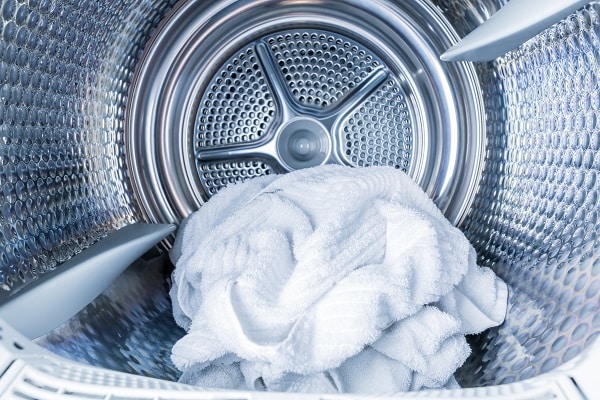
A typical dryer works by circulating hot air to evaporate moisture in the laundry, which can be harmful to your swimwear. The heat generated inside a dryer can reach levels high enough to cause significant damage. Prolonged exposure to this heat can cause your swimwear to warp, the color to fade, and the fabric to lose its elasticity.
In addition to heat, the mechanical action of tumbling in a dryer can stress the fibers of your swimwear. The resulting friction can lead to unnecessary stretching and can weaken the fabric over time. Thus, while a dryer may seem like a convenient option, it might not be the best choice for your swimwear.
Alternative Drying Methods
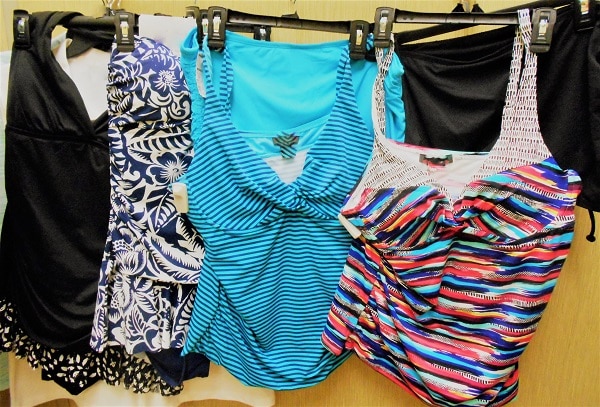
Fortunately, there are safer methods of drying your swimwear that won’t jeopardize its lifespan. Air drying is one such method. After rinsing your swimwear thoroughly to remove any chlorine, salt, or sand, simply lay it flat on a clean towel in a well-ventilated area. Keep it away from direct sunlight to prevent fading.
Another gentle drying technique is towel rolling. Lay your damp swimwear flat on a clean, dry towel and roll the towel up with the swimwear inside. Gently press on the rolled towel to absorb the excess water. This method, while a bit more involved, can expedite the drying process without subjecting your swimwear to potentially damaging heat or mechanical stress.
Prepping Your Swimwear For The Dryer
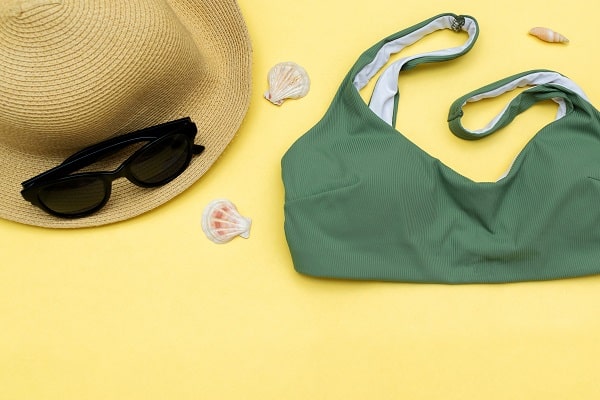
Should you need to use a dryer, proper prepping can minimize potential damage. Begin by rinsing your swimwear thoroughly in cold water to remove any lingering chlorine, salt, or sand. These substances can damage the fabric over time and may cause issues in a dryer.
Next, gently wring out any excess water, being careful not to twist or stretch the material as this can affect its shape and elasticity. It’s also good practice to turn your swimwear inside out. This can protect the colors and patterns from fading and the fabric from pilling.
Safe Use Of Dryer For Swimwear

Though using a dryer for your swimwear is generally not recommended, there are ways to mitigate the potential damage if circumstances necessitate its use. First, ensure you are using the delicate or low-heat setting on your dryer. This will expose your swimwear to the least amount of heat possible.
In addition, try to dry your swimwear with other soft items, like towels. These can cushion your swimwear and reduce the amount of friction it experiences. Also, limit the drying time to just what’s necessary for your swimwear to dry. Overdrying can result in unnecessary exposure to heat.
Specialized Products For Swimwear Care
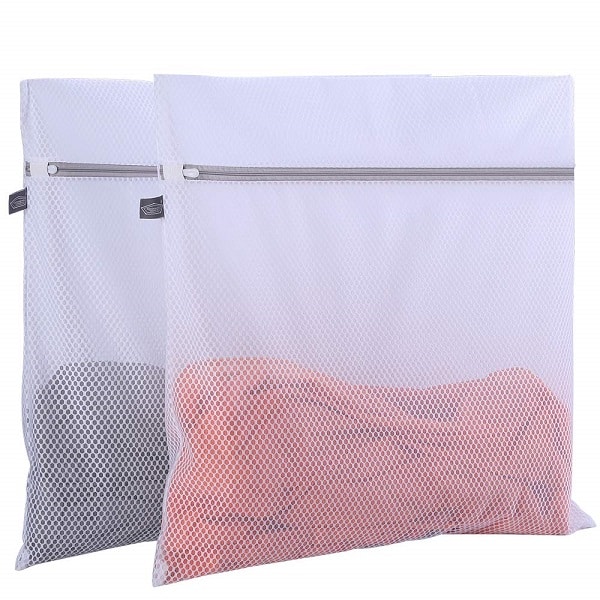
There are numerous specialized products available that can aid in swimwear care. Consider using a laundry detergent specifically designed for swimwear, which can clean without damaging the delicate fabric. Furthermore, fabric softeners can help maintain the elasticity of your swimwear, though they should be used sparingly as they can cause a buildup over time.
For an added layer of protection in the dryer, consider using a mesh laundry bag. This can prevent your swimwear from getting tangled with other clothes and reduce the friction it experiences. Several high-quality mesh bags and swimwear-specific laundry products are available on the market.
Long-Term Benefits Of Proper Swimwear Care

The careful attention to swimwear care pays off in multiple ways. One of the most tangible benefits is the cost-saving aspect. By extending the lifespan of your swimwear, you can avoid frequent replacements, saving money in the long run.
Moreover, proper swimwear care is also beneficial for the environment. By reducing the need for replacements, you are also reducing waste. Plus, maintaining the look and feel of your swimwear over time enhances your swimming experiences, making each swim as enjoyable as the first.
The Do’s And Don’ts Of Swimwear Storage
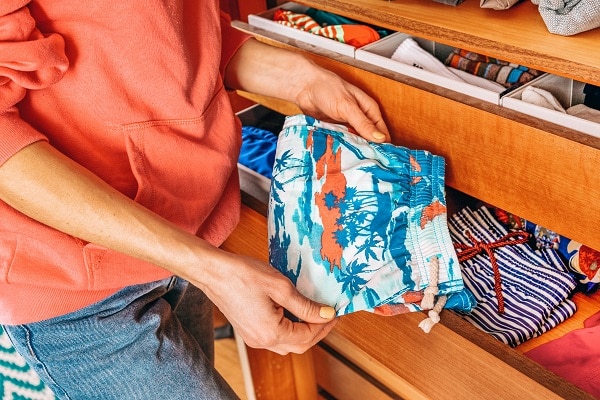
Proper storage of your swimwear can also contribute significantly to its longevity. It’s best to store your swimwear flat in a drawer or a box to maintain its shape. Avoid folding your swimwear as it could lead to unwanted creases and strain on the fabric. If you’re using a drawer or a box, lining it with a soft cloth can provide an additional layer of protection for your swimwear.
Moreover, ensure that your swimwear is completely dry before storing it away. Storing damp swimwear can lead to mildew, which can damage the material and cause unpleasant odors. Don’t store your swimwear in plastic bags, as they can trap moisture and prevent air circulation. And remember, keep your swimwear away from direct heat and sunlight, even when storing. Overexposure can cause the colors to fade and the material to degrade over time. These tips can help you maintain the integrity of your swimwear even when it’s not in use.
The Bottom Line
In conclusion, the care and preservation of your swimwear, particularly during the drying process, is critical for its longevity and performance. Understanding your swimwear’s material, utilizing safer drying methods, and taking precautions if using a dryer are vital steps in this process. Additionally, specialized care products can help maintain the integrity of your swimwear. Remember, by putting in a bit of effort, you can enjoy a long-lasting relationship with your favorite swimwear. Feel free to experiment with these tips and find what works best for your swimwear care routine.
Credible Sources
- “Swimwear Care Tips,” Speedo USA. Link
- “How to Wash Swimsuits,” Cleanipedia. Link
- “How to Care for Swimwear,” WikiHow. Link
- “Why You Shouldn’t Dry Your Clothes Indoors,” The Telegraph. Link
- “The Right Way to Care for All Your Swimwear,” The Spruce. Link
- “7 Things That Ruin Your Swimsuit,” SwimOutlet. Link
- “How to Properly Care for Your Swimwear,” LiveAbout. Link

